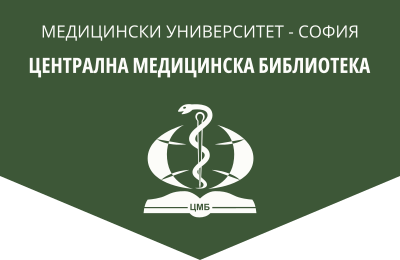Chronological antimicrobial susceptibility of nosocomial Stenotrophomonas maltophilia isolates from university hospitals in Bulgaria (2011–2023)
Medical Review (Med. pregled), 2024, 60(4), 42-49.
T. Strateva1, A. Trifonova2, A. Stratev3,4, S. Peykov1,5,6, D. Niyazi7, T. Stoeva7, E. Keuleyan2
1 Department of Medical Microbiology, Faculty of Medicine, Medical University of Sofia
2 Department of Clinical Microbiology and Virology, UMHAT “Lozenetz”, Sofia
3 Intensive Care Unit, UMHAT “Sv. Ivan Rilski”, Sofia
4 Department of Anaesthesiology and Intensive Care, Faculty of Medicine, Medical University of Sofia
5 Department of Genetics, Faculty of Biology, Sofia University “Sv. Kliment Ohridski”
6 BioInfoTech Laboratory, Sofia Tech Park, Sofia
7 Department of Microbiology and Virology, Faculty of Medicine, Medical University of Varna
Abstract. The present study aimed to chronologically track the antimicrobial susceptibility of nosocomial S. maltophilia isolates from university hospitals in Bulgaria, as well as to evaluate the in vitro activity of the novel siderophore cephalosporin cefiderocol (CFDC). A total of 250 isolates (2011–2023) identified by both automated systems and 23S rRNA polymerase chain reaction were examined. Antimicrobial susceptibil-ity was tested by a minimum inhibitory concentration (MIC) gradient method or a microdilution MIC test (for CFDC). Overall, over the 12-year period, susceptibility was highest to minocycline (no resistant (R) isolates), followed by levofloxacin (LVX) (10% R). Resistance rates to trimethoprim- sulfamethoxazole (SXT) and chloram-phenicol were similar, at 12% and 16%, respectively. The antimicrobial susceptibility profile of S. maltophilia in the monitored hospitals demonstrated relative chronological stability, except for higher resistance to ceftazidime in the period from 2018 to 2023 (81.7% vs. 55.3% in 2011–2016; p < 0.0001). For the first-line antimicrobial drugs, SXT and LVX, reciprocal findings were found – a decrease in resistance to SXT in the later period (from 13.7% to 7.3%) and an increase to LVX (8.3% vs. 13.4%), which were not statistically significant. The siderophore cephalosporin CFDC, approved for clinical use in 2019, showed excellent in vitro activity against the tested nosocomial S. maltophilia isolates, expressed in absolute susceptibility and low MIC50/90 values – 0.032 mg/L and 0.25 mg/L, respectively. Limited therapeutic options and globally increasing resistance, especially to fluoroquinolones, in the post-COVID-19 era impose the development of new strategies to combat infections caused by S. maltophilia.
Key words: nosocomial Stenotrophomonas maltophilia isolates, chronological antimicrobial susceptibility, trimethoprim-sulfamethoxazole, levofloxacin, cefiderocol
Address for correspondence: Prof. Tanya Strateva, MD, PhD, e-mail: dr.strateva@abv.bg
